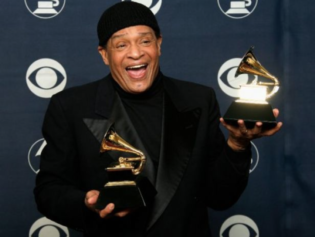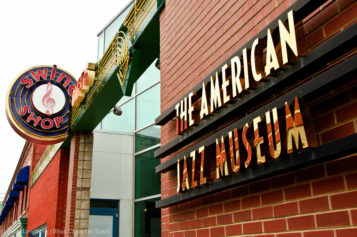On a Saturday night last month, about a half-mile from a mural featuring Billie Holiday, Lena Horne, Ella Fitzgerald, and John Coltrane, a trio led by pianist Danny Mixon warmed up with the show tune-turned-jazz standard “All the Things You Are.” Antoinette Montague, the featured soloist, inspired the 400-or-so audience members to compulsive head-bobbing, hand-clapping, foot-stomping, and call-and-response for more than an hour.
That exuberant performance could have happened during a concert at a club. But it actually took place at St. Albans Congregational Church in Queens, New York, as part of a worship service.
St. Albans’ monthly jazz communion service started in 2001, partly to pay homage to the area’s storied past as home to some of the 20th century’s most celebrated jazz performers. And in an era of digitized beats and auto-tune vocals, senior pastor Rev. Dr. Henry T. Simmons wants to preserve jazz and the discipline it demands as an example to young people.
He’s part of a new cohort of faith leaders who see jazz as an evangelism strategy to fill pews with people who would otherwise skip service. “There are a lot of people who have been a bit turned off by the church, particularly younger folk and men,” he said, noting that jazz attracts greater male attendance than St. Albans’ other services.
Elements of jazz have been in black churches since the enslaved people transformed Christian hymns with West African rhythms. Jazz would later emerge from gospel and blues as a distinct genre. But the music developed a stigma for being worldly, played in dimly lit smoke-filled venues, and deemed inappropriate for Sunday morning.
In the 1960s, jazz artists began to shift this perception with sacred compositions. Among them: pianist Mary Lou Williams with the album, “Black Christ of the Andes,” and the bandleader Duke Ellington, who performed three “Sacred Concerts” in churches and cathedrals across the U.S. and Europe.
What’s different now is that churches of varying perspectives and racial identities have picked up on Simmons’ strategy of using jazz to attract disaffected believers, and a number of pastors have embraced the notion that jazz has something to do with prayer and can enhance the worship experience.
Some sanctuaries have extensive programs with rotating musicians. Others have a house band, or just a bass player and pianist. In most cases, musicians are playing jazz standards, reinterpreting sacred music, or presenting original material.
At Chicago’s Fourth Presbyterian Church, located at the top of the city’s Magnificent Mile, each Sunday at 4 p.m. the Lucy Smith Quartet draws heavily from sacred offerings like Coltrane’s “Dear Lord,” and songs from his “A Love Supreme” album.
Adam Fronczek, associate pastor for adult education and worship, started the weekly services in mid-2010 to reach people who didn’t grow up in church or had stopped coming and wanted to return. Fronczek found jazz particularly useful because he sees the music as theologically rich.
“There’s a musical journey that goes on with a piece of jazz music that I think mirrors our journey through the life of faith,” he said, referring to improvisation that occurs during performance. As he sees it, life’s routines, like familiar melodies, can abruptly veer to the uncharted and reveal new truths, and then ease back into a comfortable groove.
Read more: TheAtlantic

